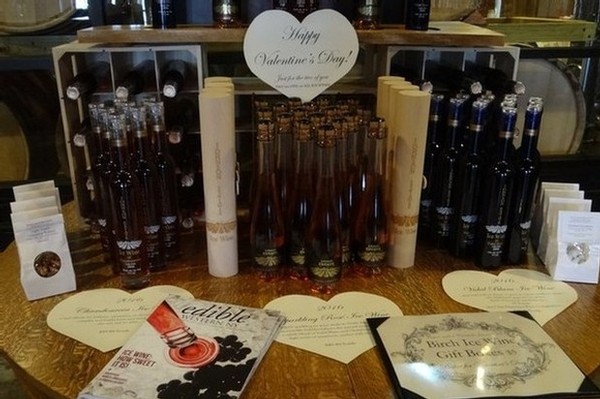Blog
98 Points! Read All About It
Just Released: Results for 2019 International Eastern Wine Competition, Santa Rosa, California:
Our 2017 Chambourcin Ice Wine was just voted best “Best of Show”, "Best of Class”, and Best of Dessert/Late Harvest. Yes, that means that the Competition's group of wine judges, who come from around the world, voted unanimously to award this wine these accolades. This garnet-colored red ice wine, which pairs famously with any dark chocolate, was also awarded 98 points. And yes, this is a score out of a possible 100 points - in which the judges are assessing all of the elements of the wine, including color, aromas, acidity, balance, and flavors which contribute to overall drinkability. Johnson Estate's team is delighted with this recognition!
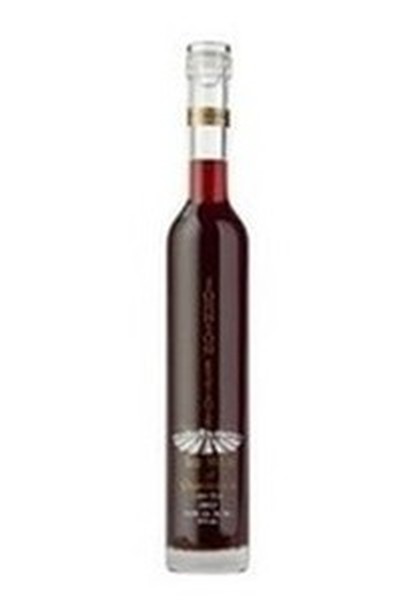
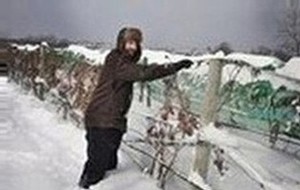
Winemaker, Jeff Murphy - 2017 Chambourcin Ice Wine Harvest, December 2017
Here are eight other Johnson Estate Winery GOLD medal winners at this Competition:
- Founder’s Red 90 points
A fruit forward, full-bodied dry red wine. - Ives 92 Points
Concord grape's first cousin, a sweet and grapey red wine. - Vidal Blanc Ice Wine 93 Points
The traditional grape for ice wines, honey and peach flavors. - Niagara 93 Points
A semi-sweet American Heirloom white wine. - Seyval Blanc 94 Points
A dry, crisp, lightly tropical white wine. - Concord 95 Points
All-American Heirloom red, semi-sweet wine. - House Red 95 Points
Our version of your favorite grandfather’s basement sweet wine. - Marechal Foch 96 Points
Our tasting room's 2018 best-seller; rich, silky, off-dry red wine.
Valentine Ice Wines - Two for the Price of One!
Just for Valentine's Day
Ice Wine - Two for the Price of One
Use Code: VALENTINESDAY
Valentine's Day is just a week away. Would a bottle of ice wine be a good way to celebrate it?
Johnson Estate has three vintages of award-winning "frozen by Mother Nature" true ice wines
and is featuring a "Two for the Price of One" sale just for Valentine's Day.
Vidal Blanc Ice Wine, $49.49 (375ml)
Honey and peach flavors - try it with goat cheese and honey toast.
Chambourcin Ice Wine, $49.49 (375ml)
Hints of berry and raisin - pair with chocolate, cinnamon, and walnuts.
Sparkling Rosé Ice Wine, $49.49 (375ml)
Fine mousse-like bubbles with mild strawberry flavors.
Sparkling Rosé Ice Wine, $69.49 (750ml)
Perfect for that Valentine's Day party (serves eight +).
We also have:
Birch Boxes - Especially made for our ice wine boxes
Austrian Hazelnuts or Cinnamon Walnuts to pair with ice wines.
Mid-Winter Diversions - Burns' Night Supper
Robert Burns' Night Supper


Johnson Estate Winery's owners, Fred and Jennifer Johnson, have celebrated many Burns' Night Suppers over the years, beginning when they lived in Canada. And right, most of the guests are not Scottish! While Fred doesn't own a kilt, those dinners have included guests who did wear them. Jennifer swears that the best reason to attend annual Burns' Night Dinner at the The Caledonian Society in Cincinnati is to see gentlemen dressed in kilts and jackets with elaborate ruffled shirts. These dinners were always fun - and as described in this "how to", always included poetry readings and sometimes bagpipes and dancing. Mostly celebrated with friends in Cincinnati and in western New York, some of them Scottish or of Scottish descent, our menu of the dinner hosted with friends, varied little from the one listed below.
We've added wine pairings, but please know that Scotch is always served. These days,
we might serve a Hudson Valley Single Malt Whiskey, now sold in the winery
(we're sorry, we do not have the license to ship this product to your home).
Appetizer:
Paté of Westfield Fisheries’ Smoked White Fish
Pair with sparkling or still Traminette
First Course:
Cock-a-Leekie Soup or Leek and Potato Soup
Pair with Toasted Oak Chardonnay or Pinot Noir
Main Course:
Haggis, Tatties & Neeps (Mashed Potatoes & Mashed Turnips)
Colçannon (Mashed Potatoes with Leeks & Cabbage)
Vintner's Cabernet Sauvignon or Founders' Red
Cheese Course:
Scottish Oat Cakes, Cheddar & Stilton Cheeses
Cream Sherry or Ruby Port
Dessert Course:
“Cranachan” - Toasted Oats with Whipped Cream & Fresh Raspberries
with a drizzle of Scotch Whiskey
Sips and Tips, The Science of Shape and Stemware
Sips and Tips, The Science of Shape and Stemware, Edible WesternNY, Winter 2018
by Matt Robbins
Here's how the article begins:
The holidays are upon us. You toiled over a hot stove for hours creating culinary perfection, researched the perfect wines to pair with the meal, and now your guests' stomachs are grumbling. You set the table - a seasonal table-cloth, the good china, and the beautiful centerpiece you made, pulling the whole things together. But then you go to the cabinet full of 50 different types of glassware you got from from relatives at your wedding and the panic sets in. Which one do I use? Does it matter?
Author, Matt Robbins, thinks it does. His knowledge of glassware and the interplay between them and the taste of wine is shared in this article for the Winter 2018 Issue of Edible Western NY.
Matt Robbins is a graduate of Rochester Institute of Technology with a degree in Molecular Biology and Biotechnology (aka the mad scientist). He works at Johnson Estate Winery in the tasting room as well in the winery laboratory with winemaker, Jeff Murphy and regularly educates customers and winery staff (!) about things we did not know. Here's the whole article!
Centennial Celebrations
Centennial Celebrations at Johnson Estate Winery
100th anniversary of Armistice Day (November 11, 1918-2018)
and Century Farm Award from NY Agricultural Society
A Toast to Veterans and Those Currently Serving Our Country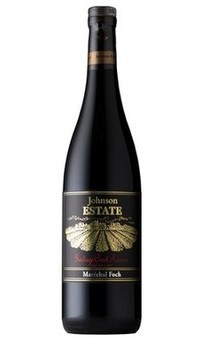
Beginning on Armistice/Veteran’s Day, November 11, 2018 and for the rest of November, Johnson Estate Winery will be offering free tastings for veterans and those serving in the military. Come taste our special wine honoring Maréchal Foch (Marshall and Commander-in-Chief of Allied Armies).
For Groups of Eight Or More: Please call Mary the winery at 716-326-2191 to make a reservation; please note that the winery is wheel chair accessible.
Centennial Dinner, December 8th, 2018
A French-inspired dinner to be held at Johnson Estate winery to feature Maréchal Foch and other red wines. Reservations ($65/person) may be made here.
Centennial News Release Here - for additional details about both Maréchal Foch and the grape variety named after him.
Ratings in 2018 - GOLDS!
Each year, Winemaker, Jeff Murphy, enters some of our wines into competitions or to rating agencies. One of his preferred judging agencies is Tastings.com or the Beverage Testing Institute - and it is a favorite because the ratings and tastings are completed "blind". That is, the tasting judges do not know the producer nor the region for the wines which they taste and then judge - helping to insure a good level of unbiased or neutral assessments of our wines.
Here are their latest ratings for Johnson Estate wines - click on links for additional details:
91 Points, GOLD-Exceptional, Best Buy, Tastings.com, August 2018.
2017 Chambourcin Ice Wine
90 Points, GOLD-Exceptional, Best Buy, Tastings.com, September 2018.
2016 Freelings Creek Reserve Founders' Red
90 Points, GOLD-Exceptional, Best Buy, Tastings.com, September 2018.
2017 Ruby Dry Rosé
90 Points, GOLD-Exceptional, Best Buy, Tastings.com, September 2018.
2016 Freelings Creek Reserve Cabernet Sauvignon
I Learned a New Word Today
I Learned a New Word Today
What Are Christmas Berries?!
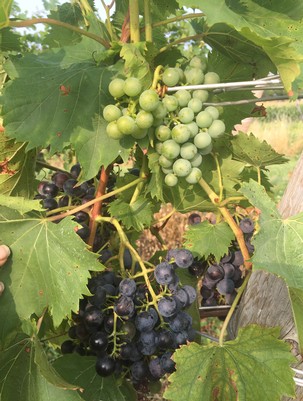
What does a grape farmer refer to when he uses that phrase? A Christmas cluster is a cluster of generally green grapes which the farmer knows would not ripen – well, until Christmas. That is, if Mother Nature could cooperate and make that happen. As this photograph of Chambourcin grapes illustrates, sometimes a cluster of grapes is pollinized late – and therefore has no hope of ripening in time for the normal harvest. Often grape farmers will cut these unseasonally green off the vines, so as not to impact the flavor of the remaining ones.
Labor Day Weekend at Johnson Estate
Things to Do – Labor Day Weekend at Johnson Estate Winery:
Sunflowers, Yoga, Wine & Centennial Farm Celebration Announced
Westfield, NY – All of a sudden, there seem to be a lot of things happening for Labor Day Weekend at Johnson Estate Winery. Let’s count them:
1. Sunflowers
It’s sunflower season at Johnson Estate – and we will have bouquets for sale at the 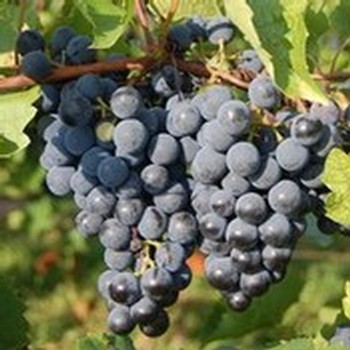 winery throughout the weekend.
winery throughout the weekend.
2. The Grapes Are Getting Ripe – Want to Taste?
As an estate winery, Johnson Estate owns and manages its own vineyards. Thirteen varieties of grapes are grown on 115 acres and and harvest begins in early September. We will have samples of the early-ripening grapes for you to taste!: – Marechal Foch, Pinot Noir, Chancellor, Seyval Blanc, and Niagara.
3. Morning Meditation and Yoga Plus Wine, Monday, September 1st
Sue Murphy will be offering the last of her late summer series of Yoga Classes on Saturday, September 1st. Join her at 10am – the class is appropriate for all attendees and is followed by included wine tastings. Please bring your yoga mat! $15/person
4. For the Weekend - 20% Case Discount or Free Shipping Home
We know that a lot of people are traveling during Labor Day weekend, and if it is hot, carrying wine in the car is problematic. So, for the weekend, purchase a case of twelve bottles of wine at Johnson Estate and choose either a 20% discount to take the wine home with you – OR get free shipping to your home (Note: available to NY, PA, OH, and thirty other states).
5. Red Wines
Fall is coming and we’ll be celebrating our dry red wines during the weekend – with a special wine display. We’ll also have a Red Wine Gift Basket – leave your email address and get a chance to win this “suitcase” with red wines.
6. On the Tasting Menu
On our tasting menu in the winery during Labor Day Weekend, we will feature a red wine of your choice paired with Mexican Chocolate Shortbread Cookies. $2.50
7. Centennial Farm Celebration Dinner – A Winemaker’s Dinner
Early in 2018, Johnson Estate was awarded a Centennial Farm Designation by the NYS Agricultural Society – which recognizes family farms which have been owned and operated by the same family for over one hundred years. We’ll be celebrating with a winemaker’s dinner in November which will feature current vintages as well as some choice library wines. More information coming soon.
Ruby Dry Rose
FOR IMMEDIATE RELEASE: May 14, 2018 CONTACT: Jennifer Johnson 513-502-0123
Johnson ESTATE Winery: Releases New Dry Rosé
Made in traditional French fashion from estate-grown Maréchal Foch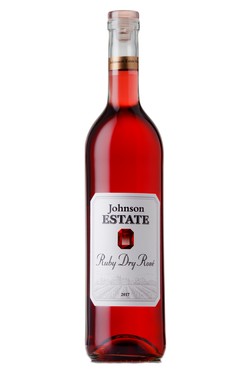
Westfield, (NY) – To start. What is the most popular wine in France? Today, it is rosé. In fact, since 2008, sales of rosé wines in France have actually been higher than sales of white or red wines. Twenty years ago in the United States, rosé was thought of as a light, pink, sweet “beach” wine. Today, more sophisticated rosé wines, often on the dry side, are experiencing a burgeoning popularity in the United States, amongst both Millennials and general wine drinkers – just as in France ten years ago. Imports of French rosé wine to the United States increased 58% in 2015 alone – and over the last fifteen years have risen from a mere 158 thousand liters in 2001 to 7.800 million liters in 2015.
Johnson Estate Winery’s 2017 Ruby Dry Rosé
In early May, just as spring was struggling to arrive in western New York, Johnson Estate’s winemaker, Jeff Murphy, confirmed that the winery’s most recent Dry Rosé was ready to be put on the shelves. The rich ruby color of this wine positively glows in its clear glass bottle. In addition, the bottle has a tempered glass cork – a pale pink re-sealable Vino-lok glass cork - which is also popular in Europe for rosé wines.
What’s the Saignée Method?
Johnson Estate’s 2017 Ruby Dry Rose was made from estate-grown Maréchal Foch grapes which were picked when fully ripe. The juice was “bled off” just an hour or so after the grapes were picked and the remaining grapes were used to make our traditional Maréchal Foch varietal wine. Thus, this light and fresh rosé juice has not been through the press nor is it fermented with grape skins. This traditional process of making rosé wine is called “the saignée method”. The resulting crisp, ruby-colored wine has an aroma of strawberries and cranberries and a velvety and full mouth-feel redolent of raspberries. Strong elements of fresh fruit and very light tannins result in the perfect summer wine.
Johnson Estate’s Ruby Dry Rosé joins a portfolio of award-winning dry, semi-dry, and sweet wines made from both classic vinifera grapes (Riesling, Chardonnay, Pinot Noir, and Cabernet Sauvignon) as well as younger French varietals (Maréchal Foch, Chambourcin, Seyval and Vidal Blanc, and Chancellor).
Johnson Estate Winery, with 115 acres of vineyards, is the oldest estate winery in New York State and a founding member of the Lake Erie Wine Country. For more information please visit www.johnsonwinery.com, or www.facebook.com/johnsonwinery, or call 716-326-2191.
[Photo Credit: John Conti, Jamestown, NY]
What's Bud Break?
Bang! Starting Gun.
"Bud Break" announces the start of a new growing season in the vineyards - a new vintage begins.
Will there be enough heat-light units to finish the race at harvest with gold medal quality grapes for the year's wine? Or will we come up short, with grapes insufficiently ripe to make the best wines?
In 2017, "bud break" - officially when half of the buds on the grape vine are showing at least the edge of half of a leaf - was about two weeks early. This year, we're about five days late than the May 4th average. Last year was ideal for producing excellent vintages; not too cool, not too wet; long mild fall; just right. Five days later than the average bud break in 2018 is no great handicap, but the vineyards will need a little extras heat during the summer (but not over 90° please)
and extra sunny days to arrive at harvest in "medal form" this year.
